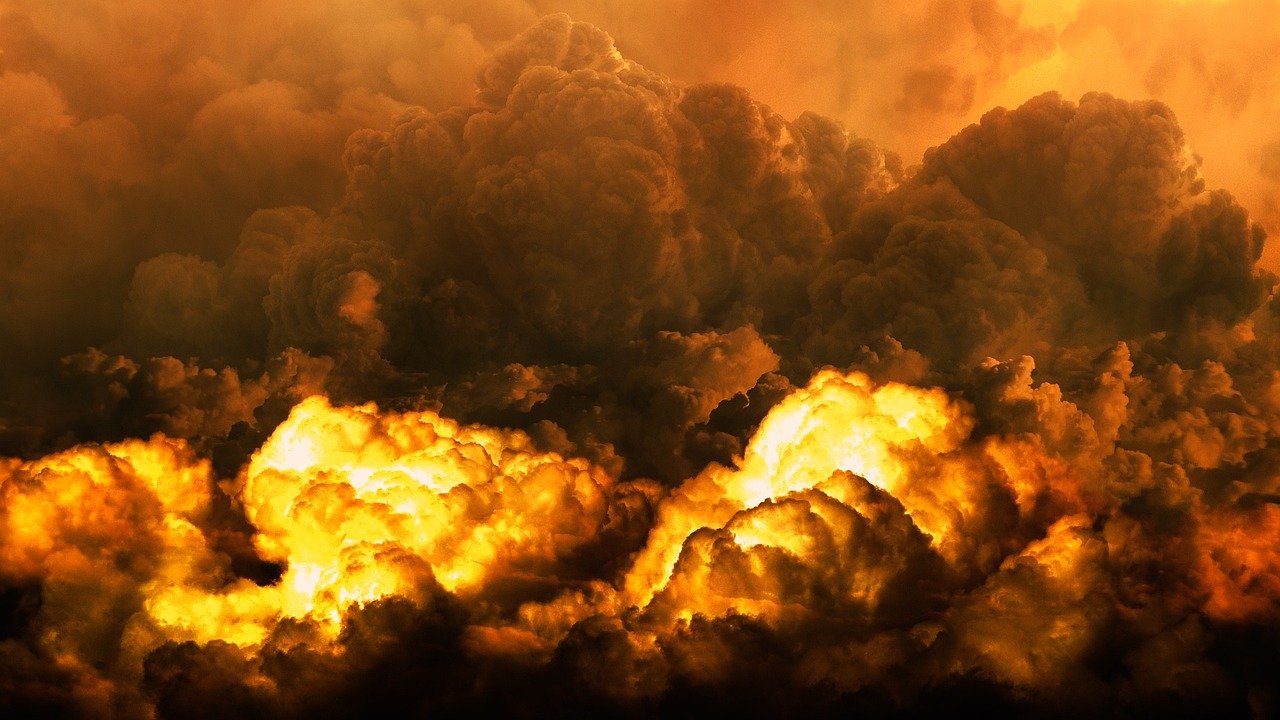Are you curious about the origins of the universe and the evidence that supports the Big Bang Theory? Look no further than the Cosmic Microwave Background (CMB), a fascinating discovery that has astounded scientists for decades. The CMB is a faint radiation that permeates the entire universe and provides crucial insights into the early stages of our cosmos. In this article, we will explore how the CMB serves as key evidence for the Big Bang Theory, shedding light on the incredible birth and expansion of our universe. Get ready to embark on a cosmic journey that will leave you in awe of the wonders of the universe.

The Big Bang Theory
Introduction to the Big Bang Theory
The Big Bang Theory is a widely accepted scientific explanation for the origins and evolution of the universe. According to this theory, the universe began as an extremely hot and dense point about 13.8 billion years ago. This initial singularity then rapidly expanded and continues to do so today. The Big Bang Theory provides a framework for understanding the structure, composition, and development of the universe as we know it.
Explanation of the Universe’s origins
The Big Bang Theory proposes that the universe originated from a singularity, a point of infinite density and temperature. At this singularity, all matter and energy that would form the universe were compressed into an incredibly small and hot state. As the universe rapidly expanded, matter and energy cooled, allowing for the formation of elementary particles, atoms, and eventually galaxies and other cosmic structures.
Expanding and cooling of the Universe
As the universe expands, it also cools down. This cooling process is a consequence of the expansion itself and is a key aspect of the Big Bang Theory. As the universe expands, the wavelengths of light and other forms of electromagnetic radiation in it also stretch. This phenomenon, known as cosmic redshift, is a crucial piece of evidence supporting the Big Bang Theory and is observed through the redshift of distant galaxies.
Formation of cosmic structures
Through the Big Bang Theory, scientists can understand how cosmic structures, such as galaxies, clusters, and superclusters, formed over billions of years. The initial density fluctuations in the early universe, caused by quantum fluctuations during cosmic inflation, played a vital role in the formation of these structures. Gravity acted on these density fluctuations, pulling matter together and giving rise to the large-scale structures we observe today.
Discovery of the Cosmic Microwave Background (CMB)
Background on CMB
The Cosmic Microwave Background (CMB) is a faint and uniform radiation that fills the entire universe. It was first discovered in 1965, and it is one of the key pieces of evidence supporting the Big Bang Theory. The CMB consists of radiation that was released when the universe was only about 380,000 years old, and it has been traveling through space ever since.
Arno Penzias and Robert Wilson’s discovery
In 1965, Arno Penzias and Robert Wilson made a landmark discovery at Bell Labs in New Jersey. They stumbled upon an unexplained source of noise in their radio telescope receiver, which turned out to be the Cosmic Microwave Background radiation. This discovery earned them the Nobel Prize in Physics in 1978, and it provided compelling evidence for the existence of the Big Bang.
Characteristics of CMB radiation
The CMB radiation is characterized by its nearly uniform distribution across the sky, with small temperature fluctuations of only a few parts in a million. These fluctuations contain valuable information about the early universe, as they reflect its initial density variations. The temperature of the CMB is measured to be approximately 2.7 Kelvin (-270.45 degrees Celsius), making it one of the coldest things in the universe.
Origin and properties of CMB photons
The CMB photons originated at the epoch of recombination when the universe had cooled enough for protons and electrons to combine and form neutral hydrogen atoms. At this point, the universe became transparent to radiation, and the CMB photons were able to freely travel through space. They have been propagating ever since, and now, billions of years later, these ancient photons provide us with valuable insights into the early universe and its properties.

Confirmation of the Big Bang Theory
Matching predictions with observations
One of the key ways in which the Big Bang Theory has been confirmed is through the comparison of its predictions with a wide range of observational data. The theory successfully predicts the cosmic redshift observed in the spectra of distant galaxies, the abundance of light elements, and the existence and properties of the CMB. The remarkable agreement between theoretical predictions and observational data lends strong support to the validity of the Big Bang Theory.
Uniformity and isotropy of CMB
One of the most significant findings supporting the Big Bang Theory is the high degree of uniformity and isotropy in the CMB. Measurements of the CMB temperature across the sky show that it is incredibly uniform with only small temperature fluctuations. This uniformity implies that the early universe was also highly uniform, as predicted by the Big Bang Theory, and provides further evidence in its favor.
Cosmic microwave background radiation spectrum
The spectrum of the CMB radiation, which describes the distribution of radiation intensity as a function of wavelength, has been measured with great precision. The CMB exhibits a nearly perfect blackbody spectrum, with small deviations from perfect smoothness due to temperature fluctuations. The consistency of the CMB spectrum with the predictions of the Big Bang Theory is a crucial confirmation of the theory’s accuracy.
Revealing the age and composition of the Universe
The study of the CMB has also helped scientists determine key characteristics of the universe, such as its age and composition. By measuring the temperature fluctuations in the CMB and combining that information with other observational data, scientists have been able to estimate the age of the universe to be approximately 13.8 billion years. Additionally, the composition of the universe, including the amount of ordinary matter, dark matter, and dark energy, has been determined through CMB observations.
Temperature Anisotropies in the CMB
Understanding temperature fluctuations
The CMB temperature fluctuations, or anisotropies, represent tiny variations in temperature across different regions of the sky. These fluctuations provide valuable insights into the density variations in the early universe, which served as the seeds for the formation of galaxies and other cosmic structures. Studying the nature and patterns of these temperature anisotropies allows scientists to better understand the evolution of the universe.
COBE and WMAP missions
The study of CMB temperature anisotropies was significantly advanced by two milestone missions: the Cosmic Background Explorer (COBE) and the Wilkinson Microwave Anisotropy Probe (WMAP). COBE, launched in 1989, provided the first detailed maps of the CMB anisotropies, confirming their existence. WMAP, launched in 2001, further refined these measurements, significantly improving our understanding of the early universe.
Measuring tiny fluctuations in CMB temperature
Detecting and measuring the extremely small temperature fluctuations in the CMB is a great scientific challenge. These fluctuations are on the order of one part in a hundred thousand, requiring highly sensitive instruments and careful data analysis techniques. Scientists use specialized telescopes and sophisticated statistical methods to extract and analyze the subtle signals embedded in the CMB radiation.
Mapping the distribution of matter in the early Universe
By mapping the temperature anisotropies in the CMB, scientists can gain insights into the distribution of matter in the early universe. The regions of slightly higher temperature correspond to regions of slightly higher matter density, providing evidence for the growth of density fluctuations predicted by the Big Bang Theory. This mapping helps scientists better understand how cosmic structures, such as galaxies and clusters, formed over billions of years.

Polarization of the CMB
Introduction to CMB polarization
In addition to temperature fluctuations, the CMB radiation also exhibits polarization. Polarization is a property of light that describes the preferred orientation of its electric field vectors. The polarization of the CMB provides further valuable insights into the conditions of the early universe and helps scientists test various cosmological models and theories.
E and B modes of polarization
The polarization of the CMB can be characterized by two distinct modes, known as E-modes and B-modes. E-modes represent polarization patterns that are similar to those created by density fluctuations, while B-modes arise due to more complex processes, such as gravitational waves. The detection and analysis of these polarization modes allow scientists to investigate the early universe in even greater detail.
Detecting and measuring polarization
Detecting and accurately measuring the polarization of the CMB is a challenging task that requires specialized instruments and careful data analysis techniques. Scientists have developed sensitive microwave detectors and have designed experiments specifically to detect and analyze the polarization signal in the CMB. These measurements provide valuable data that help refine our understanding of the early universe and its evolution.
Constraining inflationary models
The polarization signal in the CMB is particularly important for constraining various models of cosmic inflation. Inflation is a theoretical concept that suggests the universe underwent an extremely rapid expansion in its early stages. The observed polarization patterns in the CMB can provide insights into the energy scale and duration of inflation, thus helping determine which inflationary models are most consistent with observational data.
Large-Scale Structure Formation
Seeds of cosmic structure
The formation of cosmic structures, such as galaxies, clusters, and superclusters, can be traced back to tiny density fluctuations present in the early universe. These density fluctuations, often referred to as “seeds,” were generated during the inflationary epoch and grew through gravitational attraction over billions of years. Understanding the origin and evolution of these density fluctuations is crucial for comprehending the large-scale structure of the universe.
Role of CMB in understanding structure formation
The CMB plays a pivotal role in our understanding of structure formation. By studying the patterns and characteristics of the temperature anisotropies and polarization in the CMB, scientists can gain insights into the initial density fluctuations and how they evolved over time. This information helps them piece together the story of how galaxies and other cosmic structures formed and grew over cosmic history.
Growth of density fluctuations
Gravity is the driving force behind the growth of density fluctuations. Over time, regions of slightly higher density, as imprinted in the CMB, attract more matter through gravitational attraction, leading to the formation of structures like galaxies, clusters, and superclusters. The detailed study of the CMB provides crucial information on the timeline and mechanisms of this growth process.
Formation of galaxies, clusters, and superclusters
The growth of density fluctuations ultimately results in the formation of galaxies, clusters, and superclusters. Galaxies are gravitationally bound systems of stars, gas, and dust. Clusters are groups of galaxies held together by their mutual gravitational attraction, while superclusters are even larger cosmic structures consisting of multiple clusters. The understanding of structure formation gained through the study of the CMB contributes to our knowledge of how these cosmic structures came into existence.
The Cosmic Inflation Theory
Introduction to cosmic inflation
The cosmic inflation theory suggests that the universe underwent a period of extremely rapid expansion in its early stages. This inflationary epoch, proposed by physicist Alan Guth in the 1980s, addresses several key problems in cosmology, such as the flatness problem and the horizon problem. According to this theory, inflation allowed the universe to expand uniformly and smoothing out any irregularities that would have otherwise existed.
Inflationary predictions
Cosmic inflation makes several predictions that have been supported by observational data. One of the most important predictions is the presence of small density fluctuations in the early universe, imprinted in the CMB. These fluctuations provide the seeds for the formation of large-scale cosmic structures observed in the universe today. Additionally, inflation predicts that the geometry of the universe should be nearly flat, a prediction consistent with current observations.
Inflation’s imprint on the CMB
The effects of cosmic inflation on the early universe left a distinct imprint on the CMB. Inflationary models predict that the CMB temperature fluctuations should exhibit specific statistical properties, such as their amplitude and distribution. Detailed measurements of the CMB have confirmed the predictions of inflation, providing strong support for the theory’s validity.
Supporting evidence for cosmic inflation
In addition to the CMB temperature fluctuations, other lines of evidence support the cosmic inflation theory. These include the observed large-scale uniformity of the universe, the existence of acoustic peaks in the CMB power spectrum, and the overall observed large-scale structure. While the precise mechanism behind inflation is still an area of active research, the theory has garnered significant support and recognition within the scientific community.
Measuring the CMB
Ground-based experiments
Measuring the CMB requires sophisticated instruments and careful observation techniques. Ground-based experiments utilize telescopes equipped with specialized detectors to observe the CMB radiation. These experiments often require locating the telescopes in remote, high-altitude locations to minimize the interference from Earth’s atmosphere. Ground-based observations have played a crucial role in advancing our understanding of the CMB and its properties.
Satellite missions
Satellite missions have greatly contributed to our knowledge of the CMB. By placing telescopes and detectors above the Earth’s atmosphere, satellite missions can observe the CMB radiation with unprecedented accuracy and sensitivity. Landmark satellite missions, such as COBE, WMAP, and the Planck satellite, have revolutionized our understanding of the CMB and have provided crucial data for testing the Big Bang Theory and inflationary models.
Advancements in CMB observations
Advancements in technology and data analysis techniques have led to significant improvements in CMB observations. New detectors and instruments, operating at ever higher frequencies, have allowed for more detailed and precise measurements of the CMB temperature and polarization. The development of advanced data analysis methods has enabled scientists to extract even more information from the CMB data, pushing the boundaries of our understanding further.
Future missions and technologies
The study of the CMB continues to be a vibrant field of research, with several upcoming missions and technological advancements on the horizon. Future satellite missions, such as the proposed LiteBIRD and the James Webb Space Telescope, will provide even higher resolution and better precision in CMB observations. In addition, advancements in detector technologies, using superconducting materials and novel designs, hold great promise for further enhancing our understanding of the CMB and its implications for cosmology.
Challenges and Controversies
Criticism of the Big Bang Theory
While the Big Bang Theory is widely accepted, it is not without its criticisms. One major challenge is the problem of cosmic inflation itself. While inflation provides an elegant solution to several cosmological problems, the precise mechanism responsible for inflation remains unclear. Additionally, some alternative cosmological models challenge the Big Bang Theory, proposing different explanations for the observed phenomena.
Alternative cosmological models
Several alternative cosmological models have been proposed as alternatives to the Big Bang Theory. These range from cyclic models, which suggest the universe undergoes a never-ending sequence of expansions and contractions, to the steady-state theory, which posits a constant creation of matter in a universe that has always existed. While these alternative models have not gained widespread acceptance, they provoke valuable discussions and prompt further exploration of the nature of the universe.
Possible anomalies in CMB data
As our measurements of the CMB become increasingly precise, scientists have detected certain anomalies in the data. These anomalies include unexpected features in the CMB temperature and polarization distributions, which deviate from the predictions of the standard cosmological model. These anomalies have sparked debates and ongoing research, as scientists strive to understand their origin and significance in the context of the Big Bang Theory.
Unresolved questions
Despite the remarkable progress made in understanding the CMB and its implications, many questions remain unanswered. Some of the significant unresolved issues include the nature of dark matter and dark energy, the initial conditions that led to the Big Bang, and the ultimate fate of the universe. These open questions drive ongoing research and exploration in the field of cosmology, ensuring that the study of the CMB will continue to yield new insights and discoveries.
Conclusion
Significance of the CMB in cosmology
The discovery and study of the Cosmic Microwave Background have played a pivotal role in shaping our understanding of the universe. The CMB provides crucial evidence supporting the Big Bang Theory and offers valuable insights into the origins, evolution, and structure of the cosmos. Its detailed measurements have confirmed theoretical predictions, refined our knowledge of cosmic inflation, and provided constraints for cosmological models.
Continued research and exploration
The study of the CMB is an active and flourishing field of research. Scientists continue to improve our measurements and refine our understanding of the CMB’s properties. Ongoing and future missions, along with advancements in technology and data analysis techniques, promise even more exciting discoveries and advancements in our knowledge of the early universe.
Implications for our understanding of the Universe
The CMB has profound implications for our understanding of the universe. Through its study, we can gain insights into the birth of the cosmos, the formation of galaxies and cosmic structures, and the nature of dark matter and dark energy. The detailed measurements of the CMB provide a wealth of data that contribute to the development of cosmological models and the exploration of fundamental questions about the universe we inhabit.
Forthcoming discoveries and breakthroughs
As technology advances and more data is collected, we can expect exciting discoveries and breakthroughs in the study of the CMB. Future missions and technologies will enable even more precise measurements of the CMB, allowing us to explore the early universe in even greater detail. These forthcoming discoveries hold the potential to further revolutionize our understanding of cosmology, providing answers to some of the most profound questions about our existence and the universe as a whole.